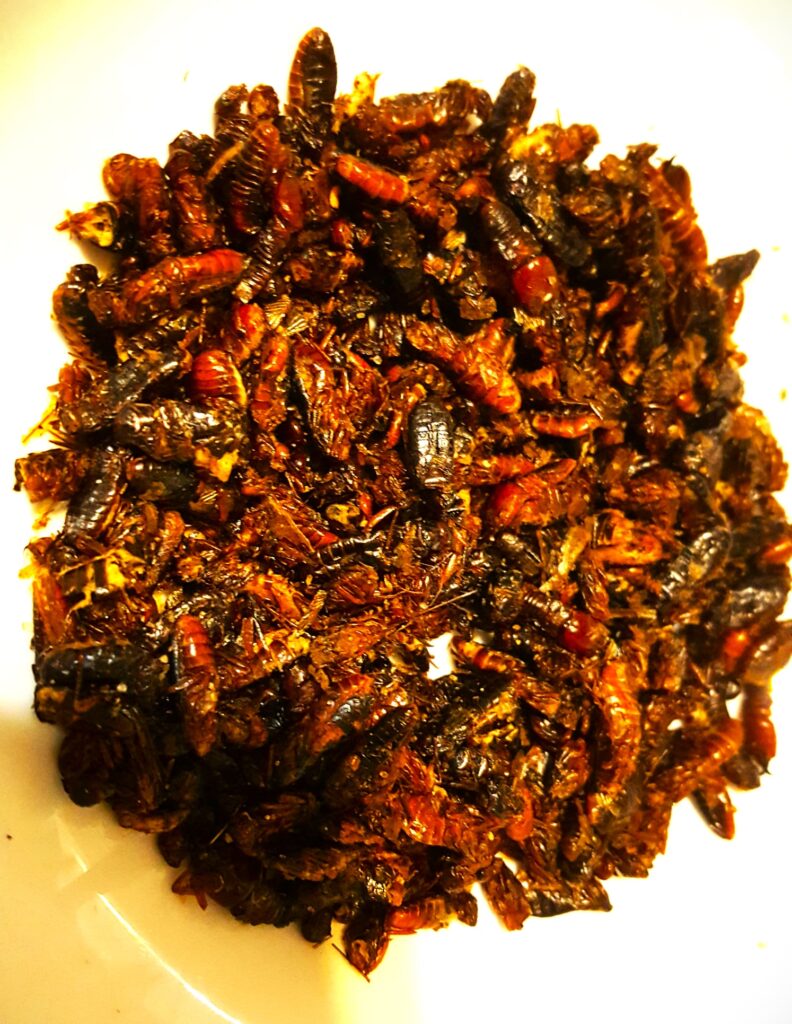by
Mwizenge S. Tembo, Ph. D.
Emeritus Professor of Sociology
The dictionary definitions of “exotic” are many: “introduced from another country : not native to the place where found” “exotic plants… exotic species creating havoc when introduced into new environments.” “strikingly, excitingly, or mysteriously different or unusual exotic flavors” “ of or relating to striptease : involving or featuring exotic dancers exotic dancing; an exotic nightclub.”
I am not sure I should call the Zambian traditional foods I enjoy exotic. Exotic to whom? The foods were not introduced from somewhere else. The foods do not create havoc but instead create culinary pleasure for me and a large population of Zambians. These foods are only exotic to non-Zambians and especially Europeans when they first arrived here in the 1700s and 1800s during colonialism.
I went to the market and bought Inswa or what are called flying ants which is the most popular name. But we call them mphalata in Tumbuka.
We used to catch buckets of them when I was young. During the middle of December, you locate a live anthill during the day. Late in the afternoon, you notice holes and big-headed magenge guard ants on the anthill which are telltale signs that the inswa would come out that night. You clear part of the anthill of grass may be half a meter by 2 meters. You build a long rectangular grass dome on it with a bucket half full of water lodged on one and only bottom open end. When the inswa come out they fly right into the bucket of water. You can fill several buckets with inswa that way as their wings are wet.
One time when I was at boarding school in rural Chipata, the inswa were taking too long to come out. One traditional method to make them come out is to roll a joint of marijuana, pot or chamba. You light it but don’t inhale the smoke yourself. Instead, you blow the smoke in the dozen or so inswa holes using a grass straw. The inswa came out in large numbers after that. We were able to collect many buckets of inswa and roasted them for lunch with nshima the following day.

They are generally cured by just roasting them on a dry pan on high heat, salting, and sun drying them until they are brittle dry. Some inswa are first sun dried and later roasted in a pan and salted. They are delicious when you eat them as a snack tossing them into your mouth just as you do with peanuts. Their aroma is terrific.
This afternoon after I returned from the market, I tossed a few into my mouth. They were so delicious I thought I would finish eating them all before I cooked nshima. I had to restrain myself.
They are even better when you eat them with nshima. Let me know how if you enjoy eating inswa or if you eat them at all.
January 12, 2022